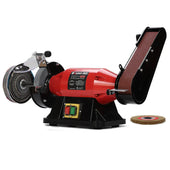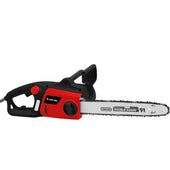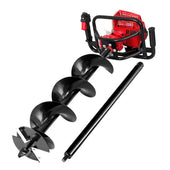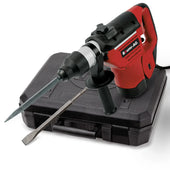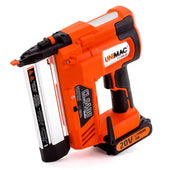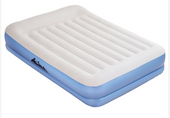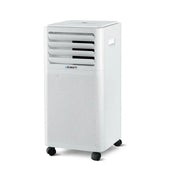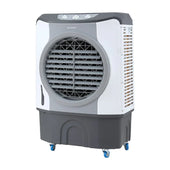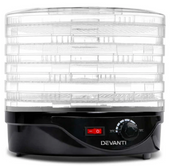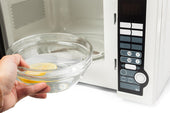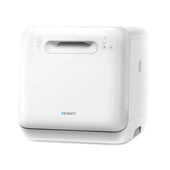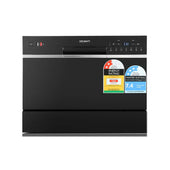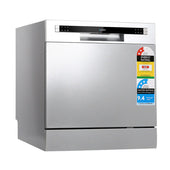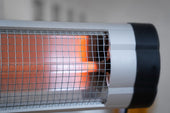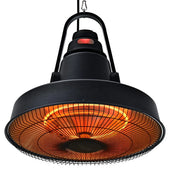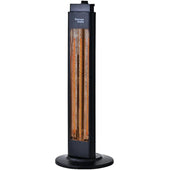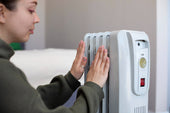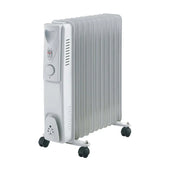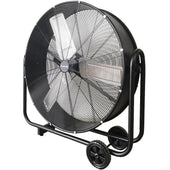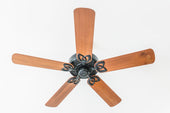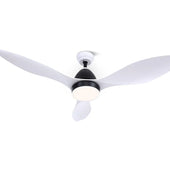Understanding the Challenge: Why Grease Stains Are Tough to Remove
Grease stains are notoriously difficult to clean due to their unique chemical properties. Being hydrophobic, grease repels water, making simple wiping ineffective. Instead of dissolving in water, grease clings to surfaces, often embedding itself into porous materials, such as upholstered kitchen chair fabric or wooden finishes. At During Days, over time, these stains can harden, turning even more stubborn.
Additionally, grease bonds with dirt and other debris, worsening the stain and expanding its reach. Heat and pressure applied while sitting can further push grease deep into fabric fibres or permeate wood grain. To remove such stains completely, tackling both the grease and any bonded particles is essential.
Essential Tools and Supplies You’ll Need for the Cleaning Process
To effectively deep clean grease-stained kitchen chairs, specific tools and supplies are required. Gathering these items beforehand ensures a seamless cleaning process:
- Microfibre cloths: Ideal for wiping surfaces without leaving streaks or lint behind.
- Soft-bristled brush or toothbrush: Useful for scrubbing stubborn grease stains in hard-to-reach areas.
- Warm water: Essential for diluting cleaning agents and rinsing surfaces.
- Dishwashing liquid: Breaks down grease effectively without damaging chair materials.
- White vinegar: A natural degreaser for tough stains.
- Baking soda: Combines with vinegar to tackle persistent build-up.
- Spray bottle: For evenly applying cleaning solutions.
- Paper towels or dry cloths: Necessary for drying after cleaning to prevent moisture damage.
Having these items prepared allows for a smoother cleaning experience.
Step 1: Preparing Your Kitchen Chairs for Deep Cleaning
To begin the deep cleaning process, ensure the chairs are free from loose debris. Use a handheld vacuum or a soft brush to remove crumbs, dust, and any loose dirt from the surface and crevices. After this, identify the material of the chairs—wood, metal, plastic, or upholstered—as this will determine the cleaning agents suitable for use.
Next, inspect the chairs for any damage such as scratches, peeling, or worn-out upholstery since special care may be needed in certain areas. Place the chairs on a protective surface like a plastic sheet or old towels to protect your flooring from spills during cleaning.
Step 2: Applying the Right Cleaning Agents for Grease Removal
Once loose debris is cleared, applying the appropriate cleaning agent is crucial for tackling stubborn grease stains. Select a degreaser suited to the chair’s material to prevent damage. For wooden chairs, mix warm water with mild dish soap. Upholstered chairs may benefit from fabric-safe cleaners, while metal or plastic chairs can handle commercial degreasers or vinegar solutions.
Always test the cleaner on a hidden area beforehand. Use a soft cloth or sponge to apply the cleaning agent, focusing on grease-covered spots. For harder-to-reach grooves, use a soft-bristled brush. Rinse thoroughly to avoid residue buildup.
Step 3: Scrubbing Techniques for Different Chair Materials
Effective scrubbing varies depending on the chair's material. For wooden chairs, use a soft-bristled brush or sponge with a gentle dish soap solution. Avoid excess water to prevent wood damage. Wipe down with a damp cloth and dry immediately with a clean towel.
For upholstered chairs, test a fabric-safe cleaner on an inconspicuous area first. Use a soft brush or microfibre cloth to lift grease stains, working in small circular motions. Blot the area with a dry cloth.
Metal or plastic chairs require a non-abrasive sponge and a mild grease-cutting detergent. Rinse thoroughly and dry with a lint-free cloth to prevent streaks or rusting.
Rinsing and Removing Residue: Ensuring a Spotless Finish
Rinsing off the cleaning solution thoroughly is crucial for preventing residue buildup and preserving the chair’s surface. Begin by dampening a soft, lint-free cloth or sponge with clean, lukewarm water. Gently wipe down every area of the chair to remove traces of cleaner. If the chair features intricate details or seams, ensure extra attention is paid to these spots, as residue tends to collect in crevices.
After rinsing, use a dry, absorbent cloth to pat the surface, removing excess moisture. Allow the chair to air dry completely to avoid streaks or water spots. During this stage, natural ventilation improves drying efficiency.
Dealing with Stubborn Grease Stains: Pro Tips and Tricks
Effectively tackling tough grease stains requires a strategic approach and the right tools. Begin by blotting excess grease with a paper towel or clean cloth to prevent it from spreading. Avoid rubbing, as this can push the stain deeper into the fabric.
Use a gentle, grease-fighting detergent or a solution of warm water and washing-up liquid. Apply directly to the stain and scrub lightly with a soft-bristled brush or sponge. For set-in stains, sprinkle bicarbonate of soda or cornflour over the area, letting it sit to absorb oil. Follow with a thorough wipe using a damp cloth to remove residue.
Drying Your Chairs Safely to Avoid Damage or Warping
Proper drying techniques are essential to preserve the integrity of kitchen chairs after cleaning. Avoid direct exposure to intense heat, such as sunlight or heaters, as this may cause warping or fading. Instead, use soft, absorbent towels to gently pat surfaces dry. Leave chairs in a well-ventilated space to air-dry completely, ensuring moisture doesn't remain trapped in joints or upholstery.
For wooden chairs, check for residual water in grooves and wipe carefully to prevent swelling. Upholstered chairs should dry in an upright position to maintain proper shape. Monitor humidity levels to reduce mould or mildew risks.
Preventative Measures to Keep Grease Stains at Bay
Preventing grease stains on kitchen chairs involves adopting simple yet effective practices. Regular cleaning with a damp cloth can help prevent grease build-up. Encourage family members to use placemats or wipe their hands frequently during meals to minimise direct contact between food and chairs. Upholstered chairs can benefit from protective covers or treatments, such as fabric protectors, which act as a barrier against spills.
Cooking in a well-ventilated kitchen also aids in reducing airborne grease particles. For dining areas near cooking spaces, using extractor fans can limit grease accumulation on nearby furniture. Avoid resting oily utensils directly on chairs to eliminate potential stains.
Choosing the Best Products for Long-Term Chair Maintenance
Selecting appropriate products is essential for preserving kitchen chairs in optimal condition. The materials of the chairs—wood, fabric, leather, or metal—determine the type of maintenance supplies required.
- Wood chairs: Use a gentle, non-abrasive wood cleaner to protect finishes while ensuring durability. A furniture polish with natural oils can add shine and prevent drying over time.
- Fabric upholstery: Opt for fabric-safe stain removers and odour-neutralising sprays. Consider fabric protection sprays to repel grease and stains.
- Leather chairs: Clean with leather-specific cleaning wipes, and maintain softness with a leather conditioner. Look for non-toxic formulas for safety.
- Metal frames: Apply rust-resistant cleaners and sealants to guard against corrosion.
Regular, product-specific care prolongs the lifespan of chairs and prevents frequent damage.
How Often Should Kitchen Chairs Be Deep Cleaned?
Kitchen chairs should be deep cleaned every two to three months to prevent the buildup of grease, grime, and embedded stains caused by daily use. The frequency may vary based on factors such as:
- Usage levels: Chairs used regularly for meals or by children may require more frequent cleaning.
- Spill frequency: Accidental food or drink spills warrant additional deep cleaning to prevent long-term damage.
- Material type: Upholstered chairs might need careful attention every few months, while wooden or metal chairs may withstand longer intervals.
For heavily used areas, monthly deep cleaning is recommended. Regular wiping after meals helps minimise deep cleaning needs.
Eco-Friendly Cleaning Solutions for Grease-Stained Chairs
When tackling grease stains, opting for eco-friendly cleaning products ensures effective results while minimising environmental impact. Natural solutions such as vinegar, baking soda, and lemon juice work as powerful degreasers. To create a DIY cleaning solution:
- Mix one part white vinegar with two parts warm water.
- Add a teaspoon of baking soda for extra grease-fighting power.
- Use a few drops of essential oil if you want to neutralise odours.
Apply the mixture using a soft cloth or sponge. Gently rub the stain in small circles to lift grease without damaging the material. Always test on inconspicuous spots before full application.
Common Mistakes to Avoid While Cleaning Grease-Stained Furniture
- Using Incorrect Cleaning Products: Some people mistakenly pick harsh chemicals that can discolour or damage upholstery, wood, or metal finishes.
- Skipping Pre-Treatment: Attempting to clean grease stains directly without pre-treating them can make the stain spread or set deeper.
- Over-Saturating Furniture: Excessive water or cleaning solution use can lead to fabric shrinkage, warping of wooden surfaces, or rust on metallic elements.
- Scrubbing Too Hard: Vigorous scrubbing often damages sensitive material, especially fabrics, leaving scratches or causing fraying.
- Ignoring Manufacturer’s Guidelines: Manufacturer care labels often provide specific cleaning instructions that are vital to maintaining durability and finish.
When to Seek Professional Help for Persistent Stains
If grease stains persist despite regular cleaning efforts, professional assistance may be necessary. Specialists possess the expertise and equipment to address challenging stains effectively without damaging the chair material. Upholstered chairs with deeply embedded grease stains, particularly those made of delicate fabrics like velvet or silk, may benefit from professional intervention. Professionals use advanced techniques, such as steam cleaning or special solvents, that are safe yet highly effective.
Seek help if DIY methods cause discolouration, texture changes, or worsen the stain. For antique or high-value furniture, consulting an expert ensures proper care and preservation of the item’s aesthetics. Always address these challenges promptly to prevent permanent damage.
Final Thoughts: Restoring the Sparkle of Your Kitchen Chairs
Achieving grease-free kitchen chairs not only enhances their aesthetic appeal but also contributes to a cleaner, healthier environment. By following the three-step method, homeowners can effectively tackle stubborn stains without unnecessary strain or damage. Regular maintenance plays a crucial role in preserving the look and feel of the chairs over time.
- Ensuring proper ventilation during cleaning avoids lingering chemical odours.
- Using appropriate tools, like soft-bristle brushes, prevents surface scratches.
- Selecting eco-friendly cleaning solutions safeguards both the furniture and the environment.
The synergy between technique and proper care adds lasting value to kitchen furniture, making them shine as focal points of a welcoming home space.



